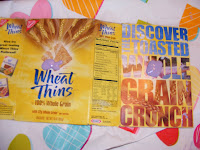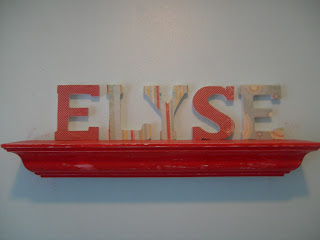UPDATE 4/5/12: Still looks good as new after many washes in cold water and bleach-free detergent!
I wanted to start putting size tags on the clothing I've been making for my friends' children. I found various websites that you can order from, but I didn't need that many and didn't want to spend too much money on the fabric paper. After some online research, I tried freezer paper technique and a solution of some household items.
You could also design a fun larger image and sew it to a T-shirt, tote or blanket, etc.
Want to try it? Here's what you need-
what you need:
ink fixative to pretreat fabric to prevent ink from washing out (or make your own-see below)
cake pan for soaking fabric
ink jet printer
freezer paper
fabric (100% cotton works best)
piece of regular copy paper- 8-1/2" x 11"
computer program to design- I just used Word so nothing too fancy is required
iron-cotton setting
glue stick
(1) Select your fabric. I found 100% cotton fabric works best. I used an old pillowcase. I'm going to try using some flour sack towels I found at the Dollar Tree. (UPDATE 4/5/12: flour sack towels worked great and were very affordable)
(2) Pretreat your fabric with an ink fixative to help prevent the ink from washing out. I made my own.
I found a site that said you could use a fabric softener solution
here
I didn't have any liquid fabric softener, but I found a 'recipe' to make homemade fabric softener solution
here
I just wanted to try it out, so I cut back the recipe to 1/4.
1/4 c baking soda
add 1-1/2 cup distilled white vinegar
4 c water
(3) Lay pieces of fabric (each approximately 8-1/2" x 11") and soak a few minutes, then allow to dry completely. (I put mine in the dryer for a bit too. Could also try a hairdryer.)
You could also try putting the solution in a spray bottle. Spray onto the fabric and just make sure to spread the solution across the surface of the fabric.
(4) Gently iron dry fabric.
(Make sure fabric is completely dry or you will get water spots...like I did the first time... :-(
(5) Right side of fabric down, iron freezer paper to adhere to fabric (smooth, shiny side down onto fabric). Allow to cool a few minutes.
(6) Use glue stick to apply freezer paper onto copy paper. Make sure to glue down the corners, so it doesn't get caught in the printer. No fabric or freezer paper should fall outside of the copy paper.
(7) Test your image. Print your image onto a regular piece of paper to make sure it's spaced right.
(8) If all looks good, run your fabric paper through. Do not touch ink. Allow ink to dry for 10 minutes.
(9) Peel off freezer paper. Place a cheese cloth/ dishtowel on top of fabric, and set ink with iron. Iron over images about 20 seconds. Allow fabric to cool.
(10) Run fabric gently under cold tap water. Gently wipe with your fingers to make sure ink will not smear. Do not wring the fabric. Dry with paper towels. Use hairdryer to speed up drying time.
(11) Cut your images out and sew to your creations for a professional, unique touch. Wash garment on cold, gentle cycle. The subtle vinegar smell will go away after first wash.
Would love to see your labels (which will be much more creative than mine). Please share pics!
Click
here for a great tutorial using purchased fabric paper. I incorporated some of these steps in my version.



















































